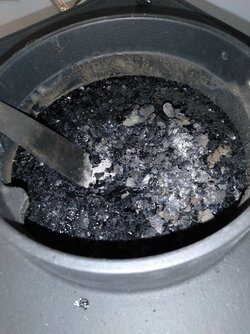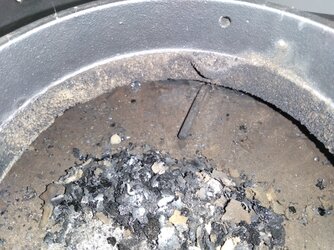I completed my pre-season cleaning today now that wasp activity is slowing down. There is a decent amount of very dry, light, loose flaky creosote on top of the insulation blanket/baffle area under the stove outlet. It's the stuff that falls down from the walls of the chimney during use, when the wind blows, etc. I cleaned about halfway through last year and found about the same accumulation, so this is more or less what happened in the second half of the burning season. At the time I chalked the initial accumulation up to some of my break-in fires and the learning curve of using this stove.
I burnt almost exclusively 14-17% MC mulberry last year after the first cleaning. Am I doing something wrong here? Is there something I can learn? The chimney itself looked pretty darn good when I cleaned today. Mostly I am annoyed since it winds up covering the temp probe that operates the air inlet damper in my Aspen C3.


I burnt almost exclusively 14-17% MC mulberry last year after the first cleaning. Am I doing something wrong here? Is there something I can learn? The chimney itself looked pretty darn good when I cleaned today. Mostly I am annoyed since it winds up covering the temp probe that operates the air inlet damper in my Aspen C3.



